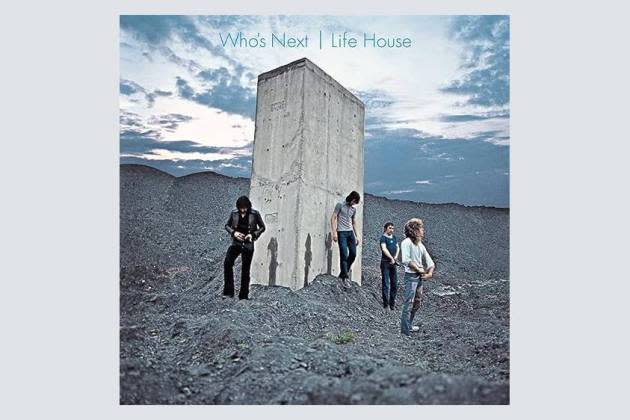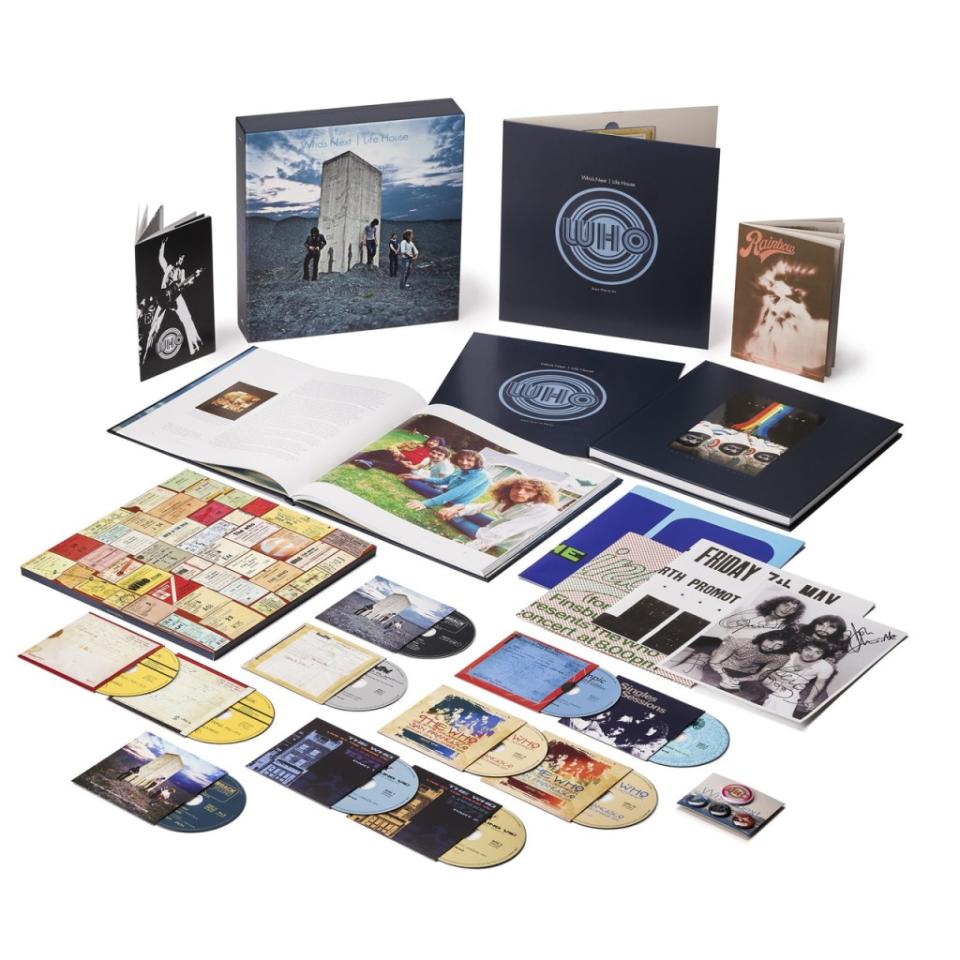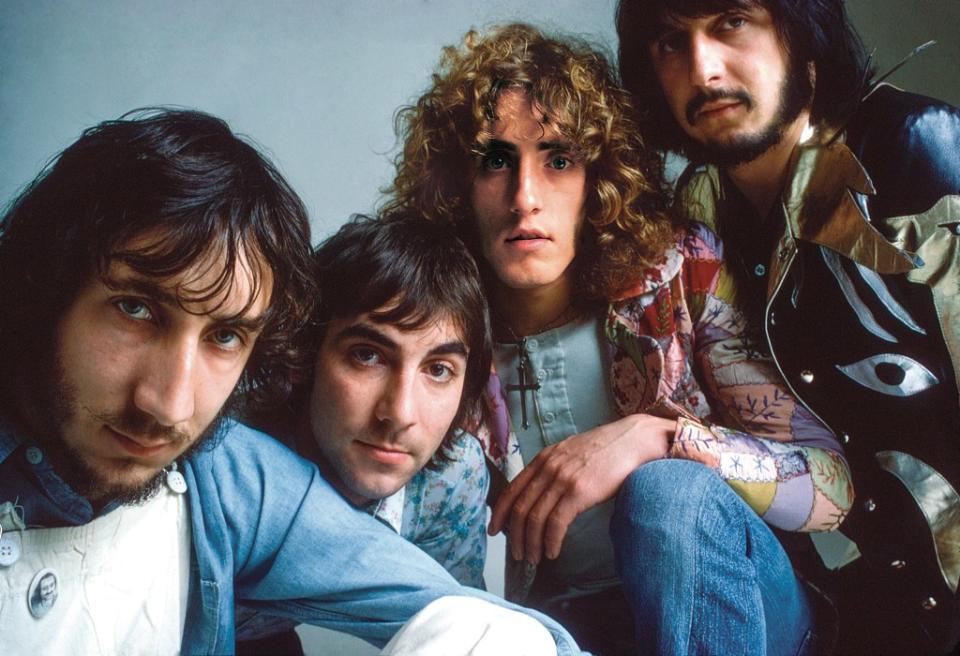The Who’s Great Lost Masterwork, ‘Life House,’ Finally Gets Its Due in Massive ‘Who’s Next’ Boxed Set: Album Review
- Oops!Something went wrong.Please try again later.
- Oops!Something went wrong.Please try again later.
- Oops!Something went wrong.Please try again later.

Contemporary music is filled with great unreleased albums — the Beach Boys’ “Smile,” Marvin Gaye’s “Love Man,” the Clash’s “Rat Patrol From Fort Bragg,” David Bowie’s soundtrack to “The Man Who Fell to Earth,” multiple titles from Prince, Kanye West and Neil Young — many of which never truly existed in anything resembling finished form. Usually, such albums turn out to be overblown in terms of their significance, leaving die-hard fans trying to assemble the ultimate version of a tantalizing missing link in a beloved artist’s catalog from pieces that were never a whole in the first place. Many have ultimately been released in one way or another, like “Smile” — which scrapes the scraps of Brian Wilson’s sprawling sessions into a massive 9-CD boxed set — or, more satisfyingly, Young’s “Homegrown,” an album completed in 1975 that was finally released in finished, unaltered form 45 years later, along with a note from the artist himself, apologizing for holding it back for so long.
And after 52 years, perhaps the greatest mythological album of the rock era — the Who’s aborted project “Life House,” from which the 1971 classic “Who’s Next” emerged — is finally getting its true day in the sun, in the form of a massive 10-CD box with a giant, fact-and-photo-filled book that takes at least six of those CDs to read. It’s everything obsessives could have hoped for, and then some — it covers the entire 1970-72 period, including tracks from an abandoned EP and a second aborted album, an even less-realized 1972 concept outing called “Rock Is Dead” that eventually morphed into Who mastermind Pete Townshend’s next masterwork, “Quadrophenia.”
More from Variety
The Who to Release 11-Disc 'Who's Next/Life House' Boxed Set
The Who Movie About Keith Moon Is Finally Underway With Plans to Shoot This Summer (EXCLUSIVE)
“Life House” was conceived as a follow-up to Townshend’s previous opus, “Tommy.” Steeped in Eastern religion via his guru Meher Baba, Townshend attempted to marry the musical and spiritual ambitions of the late ‘60s into a project that (to vastly oversimplify) revolved around the concept that a human being’s spirit could be articulated in a musical note or series of notes. He cooked up a plot set in a future totalitarian society, where people were connected and controlled via a sort of pre-internet called “The Grid” — except for some rebellious musicians who, through their performance, were able to tap into those magical notes and melodies and connect spiritually with their audience (approximations of those melodies underpin such “Who’s Next” classic songs as “Baba O’Riley” and “Won’t Get Fooled Again”). The story ends at a concert where they succeed in this spiritual fusion, and the band and audience connect and disappear to some version of heaven… or something like that (it’s explained at length in this set’s liner notes).
Townshend plunged into the project with typical obsessiveness and even began writing a companion film. However, he grew increasingly frustrated as his bandmates and associates failed to grasp the concept to his satisfaction, and grew even more frustrated when several attempts to stage concerts like the one in the story — where they threw open the doors of a theater in London and played for whoever wandered in — unsurprisingly failed to achieve the spiritual connection he’d hoped for. Exhausted and angry, he abandoned the larger concept and instead agreed to take some of the dozens of songs he’d written and make a “normal” album, which became “Who’s Next.”
There’s little question that it’s one of the greatest albums of the 1970s and even the entire rock era, and some of its best songs retain elements of the “Life House” storyline: “Baba O’Riley” and “Going Mobile” are from the perspective of rebels living away from the Grid; “Song Is Over” was intended as the closing, after the band and the audience transcend this mortal coil; and “Won’t Get Fooled Again” is not actually the glorious, triumphant rebel song that it sounds like, but is rather about disillusionment with revolution. Lyrical references to songs, notes, tunes, chords, singing and instruments abound.
But anyone reading this far already knows that — the question is what one might be getting for the $299.99 the deluxe-uber-ultra-whatever boxed set costs. The answer: Just about everything the band recorded during this era, with 155 tracks including multiple singles, stray tracks and previously unreleased studio outtakes (and some hilarious banter); Townshend’ elaborate demos, including several songs that haven’t seen official release; and two full concert recordings: One of the failed “Life House” experiments from April of 1971, and a fiery, more standard San Francisco show from eight months later, at the end of the album’s tour cycle. (See the full tracklist below.)

Fans will find much to be transfixed by here. On the demos, we hear Townshend experimenting with primitive synthesizers and sound loops, exploring how a rock band might use them as a rhythm — a relatively new concept at the time that evolved rapidly over the following decade and is now a foundation of most forms of popular music. There’s a drastically different version of “Baba O’Riley” that’s a completely different song — a dramatic, piano-driven epic — with many of the same lyrics that shifts into the familiar arrangement toward the end. There’s a lovely instrumental version of “Song Is Over” with Nicky Hopkins’ virtuoso piano at the forefront, and fascinating less-known songs in the two CDs of Townshend demos, including “Too Much,” There’s a Fortune in Those Hills,” “Greyhound Girl” and others, presented alongside demos of long-familiar songs like “Behind Blue Eyes.” Of course, the two concerts are riveting — the April show is rougher, as the band grapples with multiple brand-new songs and the weight of the concept (and Keith Moon, the most brilliantly unruly drummer in rock history, tries to play along with pre-recorded tapes), but the San Francisco concert finds them in full flight, playing the hits and proving their status as — along with Led Zeppelin — the most powerful live rock band of the era.
Yet most fascinating is hearing the finished “Life House” songs finally, officially presented alongside each other, in the most-filled-out approximation of Townshend’s musical vision of “Life House.” The outtakes began dribbling out literally weeks after “Who’s Next” was released — on singles; in demo form on Townshend’s debut solo album, “Who Came First”; on the excellent 1974 outtakes collection “Odds and Sods” — and some of them are as truly great as the songs on “Who’s Next.” “Pure and Easy” is one of the group’s best songs and one that Townshend has said sums up the “Life House” concept better than any other; it, “Time Is Passing,” “Too Much of Anything” and “Mary” could have easily fit on “Who’s Next.” And several tracks from the abandoned “Rock Is Dead” album are missing links between “Who’s Next” and “Quadrophenia,” like the bruising “Put the Money Down” (although the “Odds and Sods” version has a much stronger vocal from Roger Daltrey) and especially “Join Together,” a magnificent call to arms based around a bouncing loop that sounds alternately like a mouth harp and a violin but is actually a synthesizer. There’s even the music that came directly before “Life House,” an aborted 1970 EP containing songs long available on “Odds and Sods” like “Naked Eye” and “Now I’m a Farmer.” This set pulls it all together into as definitive an edition as possible, with accompanying documentation, facsimiles of concert posters and, yes, even a “Life House” graphic novel.
As if there were ever any doubt, “Who’s Next/ Life House” is final proof that Townshend’s songs from this era represent one of the greatest bursts of creativity by anyone in rock history. “Life House” and the ideas around it — the universal note uniting all humans, the idea that rock music could transcend not just entertainment but earthly concerns, that performer and audience could actually fuse into a single entity — represented a final, illusory conclusion of ’60s ideals. It’s beautifully ambitious and, in retrospect, hopelessly naïve.
This box is also a memorial of sorts to original Who producer and co-manager Kit Lambert, an often overlooked figure who in so many ways was Townshend’s muse, editor and conscience, and played a key role in shaping the group’s early hits — and, crucially, “Tommy” — into coherence. But by this time he’d fallen into a heroin addiction that ultimately killed him, growing distant and endling up in a bruising legal battle with the band. While he produced these early album sessions and helped tighten the structure of several songs, eventually the group was forced to carry on without him: “Who’s Next” was recorded brilliantly by Glyn Johns, one of the greatest rock producers of all time, whose sonic clarity helped the band to see the forest for the trees.
Townshend and the Who went on to make more great songs and albums — but they never flew as close to the sun as they did here. Listening to this gargantuan boxed set, it’s hard not to get the sense that if Lambert had been healthy, he might have been able to focus Townshend’s brilliant, beautiful, exciting songs into a concept as coherent as “Tommy.” “Who’s Next/ Life House” shows how tantalizingly close they came.

The box contains a 100-page hardback book designed by Richard Evans with an introduction by Pete Townshend and new sleeve notes by compilers Andy Neil and Matt Kent giving an overview of this classic album as well as rare photos and memorabilia from the era.
Life House – The Graphic Novel is a newly commissioned work putting the album’s story into an interpretation in words and pictures of the story, and is a 172-page hardback book overseen by Pete Townshend.
To round off this exceptional set there is a wallet containing a 20″ x 30″ poster of a gig in Sunderland, England, May 7, 1970; a 25.5″ x 34.25 poster of a gig at Denver Coliseum, Denver, CO, December 10, 1971; a 20-page concert program from the Rainbow Theatre, London, November 4, 1971; a 16-page UK tour program, October/November 1971; a collectible four pin button set; and an 8″ x 10″ color photo of The Who with printed autographs.
Features
Super Deluxe Edition
10CD & Blu-Ray Audio Box Set
All 10 CDs Remastered from Original Tapes by Jon Astley
Blu-Ray Audio Disc: New Atmos & 5.1 Surround Mixes of Original Album + 14 Bonus Tracks by Steven Wilson
155 Total Tracks Incl. 89 Tracks Previously Unreleased & Another 57 Tracks with a Fresh Remix
Demos, Singles, Studio Sessions & 2 Complete Concerts
100-Page Hardback Book with New Liner Notes & Imagery
170-Page Life House Graphic Novel
2 Gig Posters
2 Concert Programs
4 Buttons
Band Photo with Printed Autographs
Selections
CD ONE: WHO’S NEXT (Remastered)
Baba O’Riley
Bargain
Love Ain’t for Keeping
My Wife
The Song Is Over
Getting In Tune
Going Mobile
Behind Blue Eyes
Won’t Get Fooled Again
CD TWO: PETE TOWNSHEND’S LIFE HOUSE DEMOS 1970 – 1971 – PART 1
Teenage Wasteland (Demo)*
Too Much (Demo) *
Going Mobile (Demo)*
There’s A Fortune in Those Hills (Demo)*
Love Ain’t For Keeping (Demo)*
Bargain (Demo)*
Greyhound Girl (Demo)*
Mary (Alternate Mix) (Demo)**
Behind Blue Eyes (Demo)*
Time Is Passing (Demo)*
Finally, Over (Demo)**
Baba O’Riley (Original Demo)**
CD THREE: PETE TOWNSHEND’S LIFE HOUSE DEMOS 1970 – 1971 – PART 2
Pure And Easy (Home Studio Mix) (Demo)*
Getting In Tune (Alternate Mix) (Demo)**
Nothing Is Everything (Let’s See Action) (Demo)*
Won’t Get Fooled Again (Demo)*
Baba O’Riley (Demo)*
Song Is Over (2021 Remix) (Demo)**
Pure And Easy (Olympic Studios Mix) (Demo)**
Mary (Original Mix) (Demo)*
Baba O’Riley (First Editing Demo)**
Song Is Over (Original Demo)*
CD FOUR: RECORD PLANT, NYC SESSIONS MARCH 1971
Don’t Do It (aka Baby Don’t You Do It) [Take 2, Unedited, March 16, 1971]**
Won’t Get Fooled Again [Take 13, March 16, 1971]*
Behind Blue Eyes (Version 1) [Take 15, March 16, 1971]**
Love Ain’t For Keeping [Take 14, March 17, 1971]*
The Note (aka Pure and Easy) [Take 21, March 17, 1971]*
I’m In Tune (aka Getting in Tune) [Take 6, March 18, 1971*
Behind Blue Eyes (Version 2) [Take 10, March 18, 1971]*
CD FIVE: OLYMPIC SOUND STUDIOS, LONDON SESSIONS 1970-72
Pure And Easy*
I Don’t Know Myself [B-side with Unreleased Count-in]
Time Is Passing [Stereo Mix]**
Too Much of Anything [Original 1971 Vocal]**
Naked Eye [1971 Remake]**
Bargain (Early Mix)**
Love Ain’t For Keeping (Unedited Mix)**
My Wife (Unedited Mix)**
Getting In Tune (Take 1 with Jam)**
Going Mobile (Alternate Mix)**
Song Is Over (Backing Track) [with Nicky Hopkins]**
When I Was a Boy**
Let’s See Action (Unedited Mix)**
Relay (Unedited Mix) [Alternate Vocal]**
Put The Money Down [Remix with Original Vocal]*
Join Together [Unedited Remix]**
CD SIX: SINGLES & SESSIONS 1970-72
The Seeker (Original Single Mix)
Here For More [Original Single Mix]
Heaven And Hell [New Stereo Mix]**
Water [Eel Pie Sound Studio – New Unedited Mix]**
I Don’t Know Myself [Eel Pie Sound Studio – New Unedited Mix]**
Naked Eye [Eel Pie Sound Studio – New Unedited Mix]**
Postcard [Eel Pie Sound Studio – Original 1970 Mix]**
Now I’m A Farmer [Eel Pie Sound Studio – New Remix]**
The Seeker (Unedited Version)**
Water (IBC Version)**
I Don’t Know Myself (IBC Version)**
Let’s See Action (Original Single Mix)
When I Was a Boy (Original Single Mix)
Join Together (Original Single Mix)
Relay (Original Single Mix)
Waspman (Original Single Mix)
Long Live Rock (Original Olympic Mix)
CD SEVEN: LIVE AT THE YOUNG VIC, LONDON – APRIL 26, 1971
Love Ain’t for Keeping*
Pure And Easy*
Young Man Blues*
Time Is Passing*
Behind Blue Eyes*
I Don’t Even Know Myself*
Too Much of Anything*
Getting In Tune*
Bargain*
CD EIGHT: LIVE AT THE YOUNG VIC, LONDON – APRIL 26, 1971
Pinball Wizard**
See Me, Feel Me**
Baby Don’t You Do It*
Water*
My Generation*
(I’m A) Road Runner*
Naked Eye*
Bony Moronie*
Won’t Get Fooled Again*
CD NINE: LIVE AT THE CIVIC AUDITORIUM, SAN FRANCISCO – DECEMBER 12, 1971
Introduction**
I Can’t Explain*
Substitute*
Summertime Blues**
My Wife*
Baba O’Riley**
Behind Blue Eyes*
Bargain*
Won’t Get Fooled Again**
Baby Don’t You Do It*
Magic Bus**
CD TEN: LIVE AT THE CIVIC AUDITORIUM, SAN FRANCISCO – DECEMBER 12, 1971
Introduction To Tommy**
Overture**
Amazing Journey**
Sparks**
Pinball Wizard**
See Me Feel Me**
My Generation**
Naked Eye*
Going Down*
BLU-RAY AUDIO: Steven Wilson Atmos Mix (48kHz 24-bit)** Steven Wilson 5.1 Mix (48kHz 24-bit)** Steven Wilson Stereo Mix (96kHz 24-bit)* Original 1971 Stereo Mix (96kHz 24-bit)
Baba O’Riley
Bargain
Love Ain’t For Keeping
My Wife
The Song Is Over
Getting In Tune
Going Mobile
Behind Blue Eyes
Won’t Get Fooled Again
BONUS TRACKS: STEVEN WILSON ATMOS MIX (48KHZ 24-BIT) STEVEN WILSON 5.1 MIX (48KHZ 24-BIT)
The Seeker (Unedited Version)**
Here For More*
Now I’m A Farmer**
I Don’t Know Myself (Eel Pie Sound Version)**
Water (IBC Version)**
Naked Eye (Olympic Sound Version)**
Pure And Easy**
Too Much of Anything**
Let’s See Action**
When I Was a Boy**
Join Together (Unedited Version)**
Put The Money Down**
Relay (Unedited Version)**
Long Live Rock**
Best of Variety
Sign up for Variety’s Newsletter. For the latest news, follow us on Facebook, Twitter, and Instagram.

